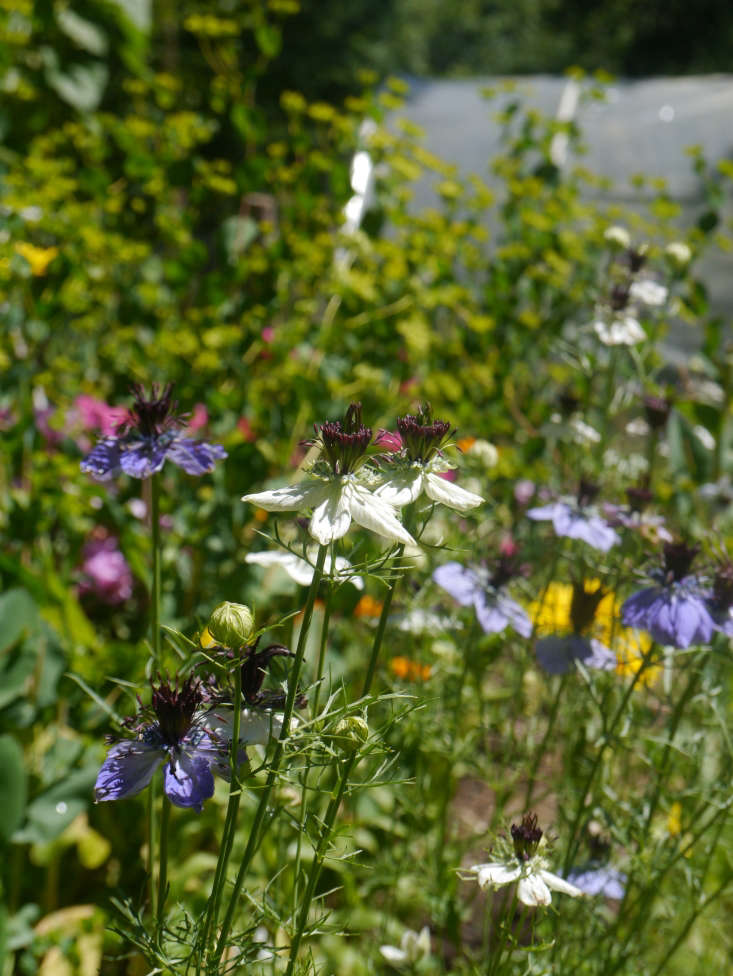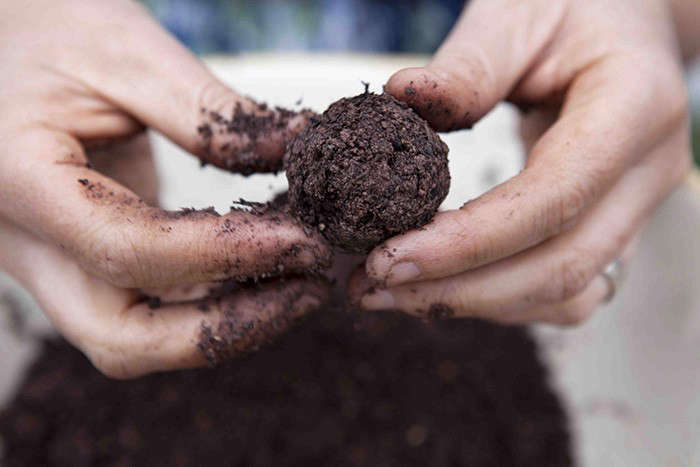Love-in-a-Mist, Nigella damascena: “The Romantic”
As Love-in-a-mist’s name implies, this old-fashioned garden annual has lovely flowers that appear to be encased in a delicate misty web of bracts. Nigella damascena is a reliable annual that’s on my must-grow list and should be on yours.
Please keep reading to learn why—and how—to grow this pretty cutting flower, which blooms in shades of blue, white, pink, and lavender.

Native to rocky areas of North Africa and southern Europe, Nigella has a long season of interest. Let me explain: Not only is love-in-a mist absolutely easy to start by sowing seeds directly into the soil in the spring but also it rewards the garden during the cool months with interesting flowers to cut. And if you can resist the urge to harvest, you get quirky seed pods when summer starts heating up.

Love-in-the-mist grows upright to heights of from one to two feet and produces flowers in cooling shades of white, blue, pink and purple. While I admire all the different varieties (more than 15 are widely available), my favorite is the traditional ‘Miss Jekyll Indigo’, with its rich blue blooms that float over the finely cut leaves.

Cheat Sheet
- Love-in-a-mist looks charming in a loose cottage, meadow, or cutting garden. You can also use this annual in a container planting where the fennel-like foliage adds texture and contrast to bolder leaves like lamb’s ear or Bergenia.
- Nigella is the perfect annual to sow over spring bulbs. Instead of unattractive bare spaces after bulbs finish blooming, you will see “love” in their place.
- Love-in-a-mist is a standout cut flower. Also, the horned, pod-shaped seed heads are marvelous in fresh or dried arrangements.

Keep It Alive
- Love-in-a-mist is a prolific re-seeder. One packet will start your obsession and then you can redeem your rewards for years to come. Tip: Harvest the seed pods while still firm and before they split open; hang upside down in a cool, dark place.
- In the spring, sow your seeds about 1/8-inch deep in a spot that gets full to part sun and keep the soil moist until sprouts appear in from two to three weeks. After it gets going, this annual takes average to little water. Love-in-a-mist does not transplant well because of its long taproot; sow seeds directly in a prepared planting bed or container.
- Few pests or problems afflict this annual. Actually, this honeybee attraction is a trouble-free plant that appreciates a little neglect. And while deadheading will prolong flowering, it also will prevent the plant from developing decorative seed pods, so it is best to let this ornamental alone.
Are you planning (or already sowing) this year’s cutting garden? See more of our favorite fast-growing flowers in our curated guide to Annuals 101, including growing and care tips for Nasturtiums, Cosmos, Poppies, and Zinnias. See more:
- The Best Sweet Peas to Plant for Spring
- Chamomile: A Field Guide to Planting, Care & Design
- DIY: Endless Cutting Garden
- Everything You Need to Know About Perennials









Have a Question or Comment About This Post?
Join the conversation